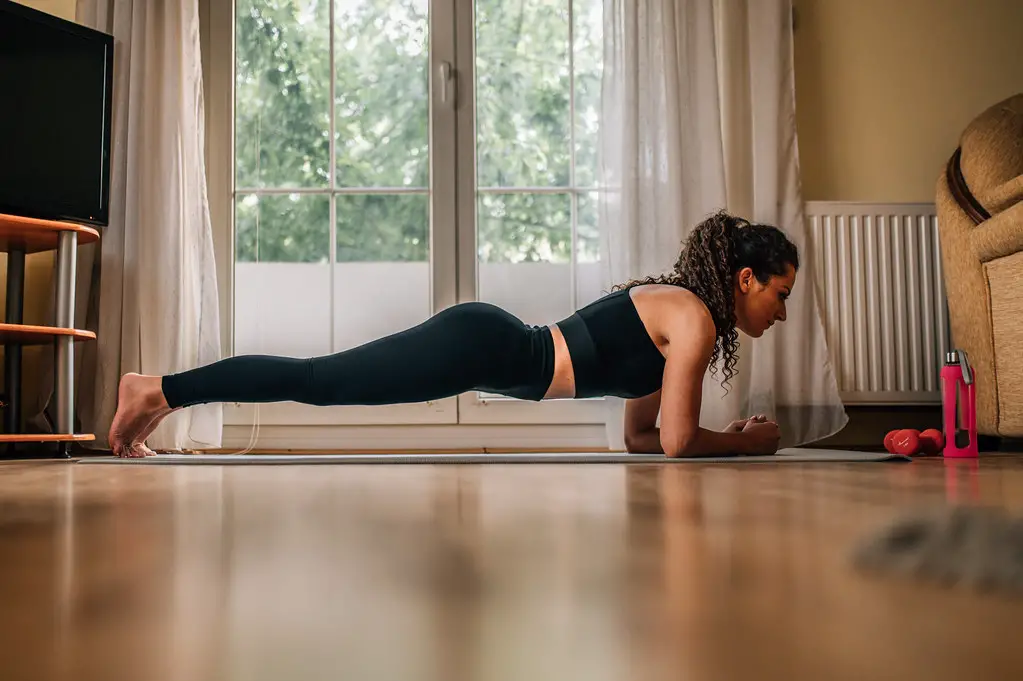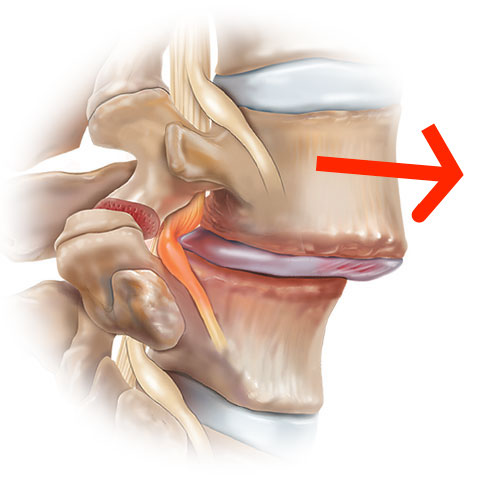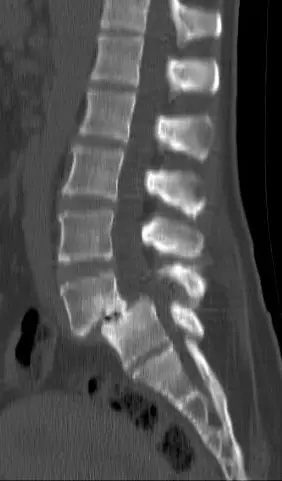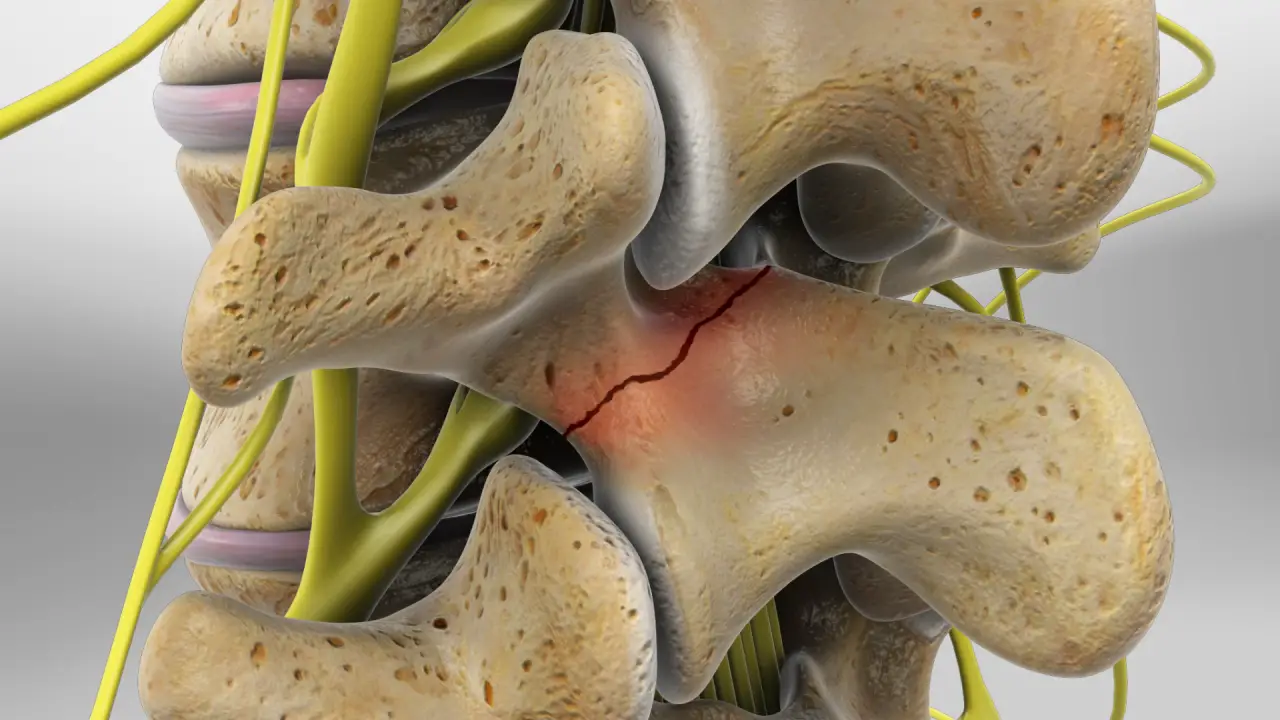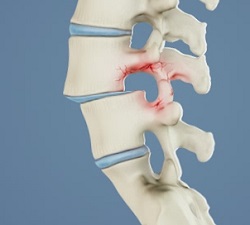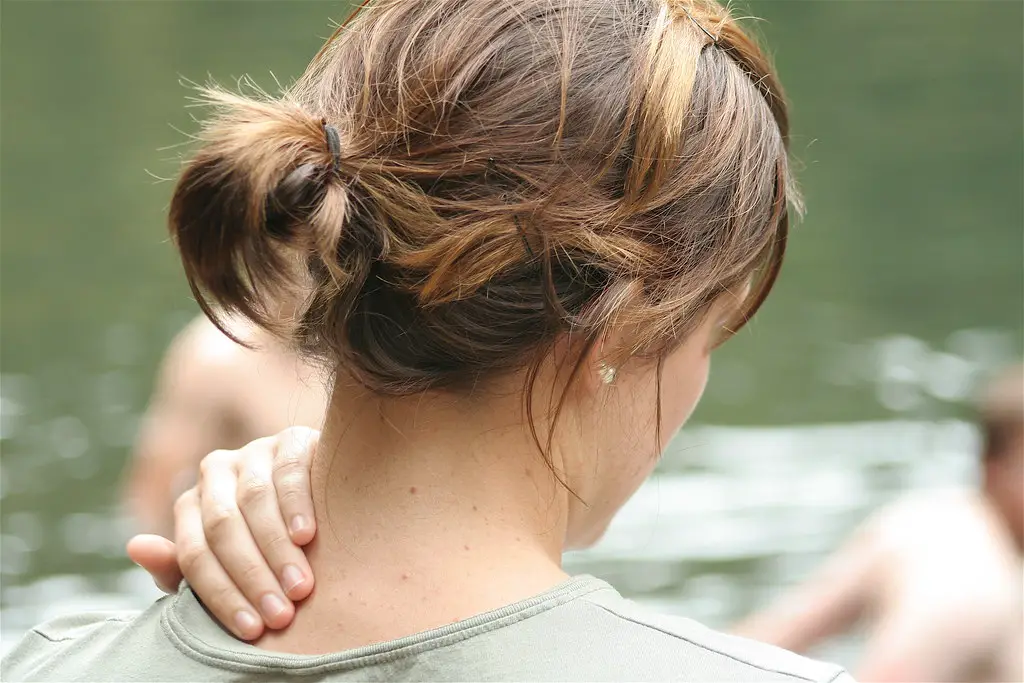If you suffer from a spondylolisthesis and you are desperately looking for solutions to relieve your pain, then you have come to the right place!
In this article, we are going to address the issue of spondylolisthesis in its entirety and offer you a list of simple and effective exercises that will be a game-changer for your back.
What is spondylolisthesis?
Le spondylolisthesis is a condition of spine characterized by the sliding of a vertebrate on another underlying vertebra. This shift will alter the normal alignment of the vertebrae and cause a reduction in the size of the Spinal canal. This may be responsible for causing lower back pain sometimes unbearable.
There are three types of spondylolisthesis, each has its own pathophysiological mechanism and causes.
- Le spondylolisthesis due to isthmic lysis
- Le degenerative spondylolisthesis
- Dysplastic or congenital spondylolisthesis
Causes of spondylolisthesis
Spondylolisthesis by isthmic lysis
This type of sliding is the prerogative of athletes practicing sports favoring lumbar extension such as: gymnastics, swimming, ballet, etc. These people suffer from repetitive microtraumas which cause, in the long term, vertebral fractures say " fatigue "Or" stress ».
Degenerative spondylolisthesis
This is related to theOsteoarthritis and therefore concerns subjects aged 50 or over.
Anatomically, osteoarthritis will cause progressive wear and tear on the bodies, intervertebral discs as well as their means of fixity. Lumbar pain is aggravated by the presence of risk factors such as overweight, menopause or againosteoporosis.
Dysplastic spondylolisthesis
Also called congenital spondylolisthesis : corresponds to a misalignment of the vertebral column which presents itself from birth. Some people are born with a malformation in the isthmus or the part connecting two adjacent vertebrae. Generally, as long as it is asymptomatic, this malformation only requires radiological monitoring.
How does spondylolisthesis manifest?
The symptomatology of spondylolisthesis depends on the importance of the spinal slip and the degree of nervous irritation for which it is responsible. Some people may have spondylolisthesis and not experience any symptoms.
Initially, most patients complain of lower back pain (low back pain), who compare it to lumbago whose intensity worsens with effort or by regularly carrying heavy loads.
In the case of advanced spondylolisthesis, depending on the extent of the compression, one can observe numbness and tingling along the legs, or spondylolisthesis may simply feel like a sciatica or an cruralgia.
In the most extreme cases, slippage can cause total strangulation of the spinal canal (spinal stenosis) which will cause more serious neurological lesions such as cauda equina syndrome or an paralyzes partial or total.
Therapeutic care
To cure your spondylolisthesis, the doctor will first prescribe medication and possibly refer you to a physiotherapist (physiotherapist) to make you benefit from a program of functional rehabilitation.
In the event that you do not respond to either of these two approaches, this means that the neurological complications are already there and that only surgery can solve your problem!
Drug treatment mainly includes paracetamol, nonsteroidal anti-inflammatory drugs (NSAIDs), codeine, tramadol, caffeine, morphine derivatives, etc. Infiltration is sometimes indicated to relieve pain and calm inflammation.
Functional rehabilitation aims to reduce pain, strengthen the tone of the muscles of the back and trunk and thus prevent the transition to advanced stages of the disease.
The rehabilitation program is very rich and the exercises it includes are numerous and very varied. We have therefore selected a list of the most important exercises to do:
Pelvic tilt (pelvic tilt)
This exercise aims to strengthen the supporting muscles of the lower part of the spine and in particular the abdominal muscles.
You have the option of performing it in three different positions: in a supine position (lying on your back), in a standing position, or in a seated position using an exercise ball.
The supine version is the most suitable technique for most patients.
For the technique:
- Start by lying on your back, bend your knees and put the soles of your feet on the mat.
- Exhale slowly and deeply so that you feel your lower back touching the floor.
- In this position, you will alternate inspirations and expirations for 15 seconds before returning to the initial position.
- Repeat the exercise 5 to 10 times.
Crunch (sit up)
This variation helps relieve lower back pain by putting more strain on the abdominals. It is done in 3 steps:
- Get into a lying position on the floor with your knees bent. Cross your arms or support your head while keeping it in line with the stroke and trunk.
- Tilt forward by bringing your head and shoulders forward until you feel your abs contract.
- Stay in this position for about 3 seconds and then return to the starting position. Repeat 10 times.
Double knee to chest
As the name suggests, this exercise involves bringing both of your knees towards your chest. This is a classic exercise for strengthening the abdominals, but it is equally beneficial for stabilizing the lumbar part.
To do this, simply lie on your back, bend both knees and hold them with your two forearms. Then, while exhaling bring your two knees towards the chest and hold them for 10 seconds then release while inhaling.
Multifidus activation (Birddog version)
This exercise is named after the muscle it strengthens, the " multidid muscle (or Multifidus)”. It is a deep spinal muscle involved in lumbar extension.
Strengthening the multifidus has several variations, but we'll stick with the Birddog variation.
The steps to follow:
- Get on your knees and hands (on all fours)
- Position your shoulders parallel to your wrists and keep your hips over your knees
- Then, while keeping your balance, try lifting your right arm forward and your left arm back toward your hips.
- Making sure your head is in a neutral position and your back is straight, stretch well for a few seconds and then release.
Hamstring stretch (lying, sitting)
This exercise engages the hamstring muscles and can be done in two versions, depending on your preference and flexibility.
Seated version:
In a seated position, straighten your right leg without bending your knee, then stretch both arms to reach for your toes or simply your ankle if you are not flexible enough.
Extended version:
Lying on the floor, lift one leg and stretch it against a wall, bringing your toes towards you.
Some advice before following an exercise program
- Starting an exercise program to relieve spondylolisthesis shouldn't be the first step in your journey. It is best to consult a health professional who will better guide your care.
- If during an exercise, the pain increases instead of decreasing, stop immediately (it may not be the right exercise or you are doing it wrong)
- If you are not sure that you can perform these exercises alone at home, get help from your physiotherapist (physiotherapist), or even a sports coach.
- These exercises are contraindicated in the advanced forms of the disease, that is to say in the event of symptoms such as: shooting pains in the legs, numbness, tingling, etc.

